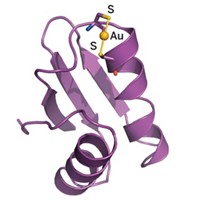Advertisement
Grab your lab coat. Let's get started
Welcome!
Welcome!
Create an account below to get 6 C&EN articles per month, receive newsletters and more - all free.
It seems this is your first time logging in online. Please enter the following information to continue.
As an ACS member you automatically get access to this site. All we need is few more details to create your reading experience.
Not you? Sign in with a different account.
Not you? Sign in with a different account.
ERROR 1
ERROR 1
ERROR 2
ERROR 2
ERROR 2
ERROR 2
ERROR 2
Password and Confirm password must match.
If you have an ACS member number, please enter it here so we can link this account to your membership. (optional)
ERROR 2
ACS values your privacy. By submitting your information, you are gaining access to C&EN and subscribing to our weekly newsletter. We use the information you provide to make your reading experience better, and we will never sell your data to third party members.
Analytical Chemistry
DNA With A Grasp For Uranium
February 12, 2007
| A version of this story appeared in
Volume 85, Issue 7
A new uranium sensor that's both portable and exquisitely sensitive could transform how scientists assess and monitor the radioactive element (Proc. Natl. Acad. Sci. USA, DOI: 10.1073/pnas.0607875104). The system will be important in environmental remediation efforts, according to chemistry professor Yi Lu of the University of Illinois, Urbana-Champaign, who spearheaded the research. Lu based the sensor on DNAzymes—DNA molecules that catalyze reactions as enzymes do. Many DNAzymes possess high affinity and specificity for metals, so Lu and his coworkers found a DNAzyme specific for the uranyl ion, UO22+, uranium's most common form in water. They then added a cleavage site, a fluorophore moiety, and two quencher moieties to suppress fluorescence. In the presence of UO22+, the DNAzyme chops off a part of the molecule containing the fluorophore, which then becomes a fluorescent beacon. With a detection limit of 11 ppt, the sensor rivals the most sensitive analytical instruments.








Join the conversation
Contact the reporter
Submit a Letter to the Editor for publication
Engage with us on Twitter